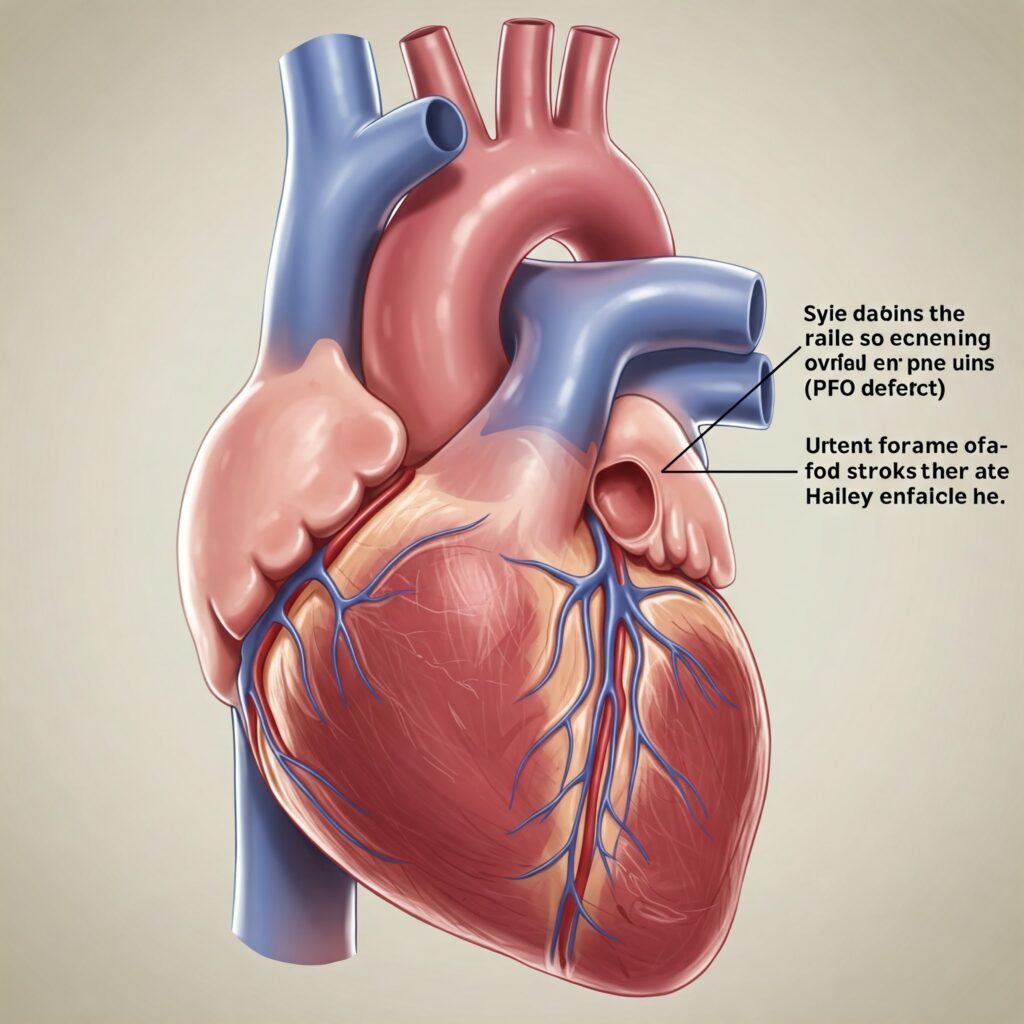
Hailey Bieber TIA
When 25-year-old model Hailey Bieber (Hailey Bieber TIA) experienced sudden numbness, slurred speech, and loss of coordination in March 2022, the world held its breath. Her health scare—initially feared to be a stroke—shed light on a critical issue: young adults are not immune to cardiovascular emergencies. Diagnosed with a transient ischemic attack (TIA) linked to a congenital heart defect, her story offers vital lessons about stroke risks, prevention, and proactive health care.
What Is a TIA (Transient Ischemic Attack)?
A TIA, often called a “mini-stroke,” occurs when blood flow to the brain is briefly disrupted, usually by a clot. Unlike a full stroke, symptoms resolve within minutes or hours, leaving no permanent damage. However, TIAs are serious warnings: 1 in 3 people who experience a TIA later suffer a stroke, per the American Stroke Association.
Hailey’s symptoms—facial numbness, speech difficulties, and arm weakness—align with the FAST acronym (Face, Arms, Speech, Time), a critical tool for identifying strokes. Her swift hospitalization underscores the importance of acting quickly, even if symptoms seem temporary.
The Hidden Culprit: Patent Foramen Ovale (PFO)
Further tests revealed Hailey had a patent foramen ovale (PFO), a small hole between the heart’s upper chambers that fails to close after birth. While 25% of people have a PFO, most never know it. In rare cases, it can allow blood clots to bypass the lungs (where they’d typically dissolve) and reach the brain, triggering a TIA or stroke.
Hailey underwent a minimally invasive PFO closure procedure, a common solution for reducing recurrent stroke risk. Cardiologists often recommend this for younger patients with no other stroke causes.
Why Young Adults Are at Risk
Strokes in people under 45 account for 10–15% of cases, per the National Stroke Association. Risk factors include:
- Congenital heart defects (like PFO)
- Hormonal birth control, which can increase clotting risks
- Dehydration (a factor in Hailey’s case)
- Lifestyle factors (smoking, poor diet, or sedentary habits)
Hailey’s use of birth control pills, combined with her PFO and dehydration, created a “perfect storm.” Her experience highlights how overlapping factors can escalate risks, even in seemingly healthy individuals.
Lessons for Prevention and Awareness
- Know the Symptoms (FAST):
- Face drooping
- Arm weakness
- Speech difficulty
- Time to call emergency services
- Address Underlying Conditions:
Unexplained health issues, like migraines or shortness of breath, could signal heart defects. Imaging tests (echocardiograms) can detect PFOs. - Hydrate and Monitor Medications:
Birth control pills require careful evaluation with a doctor, especially for those with clotting risks. Staying hydrated helps maintain healthy blood viscosity. - Advocate for Your Health:
As Hailey urged, “Don’t hesitate to ask questions or seek second opinions.” Persistent symptoms demand attention.
Hailey’s Recovery and Advocacy
After her PFO closure, Hailey prioritized rest, hydration, and stress management. She also opened up about battling PTSD post-TIA, emphasizing mental health’s role in physical recovery. Her transparency has sparked global conversations about youth stroke prevention, proving that health challenges can inspire impactful advocacy.
The Bottom Line
Hailey Bieber’s ordeal is a wake-up call: strokes don’t discriminate by age. Understanding risks, recognizing symptoms, and advocating for thorough care can save lives. As research into PFOs and youth stroke risks evolves, her story reminds us that prevention starts with awareness.
5 Health-Focused Q&A:
1. How is a TIA different from a stroke?
A TIA is a temporary blockage causing no permanent damage, while a stroke results in prolonged blood loss and brain cell death. Both require immediate medical care.
Every 40 seconds, someone in the U.S. has a stroke. But what happens when stroke-like symptoms vanish within minutes? This scenario often points to a transient ischemic attack (TIA), or “mini-stroke.” While TIAs and strokes share similarities, understanding their differences is critical for preventing disability or death. Here’s what you need to know.
2. Should young adults get screened for PFO?
Screening isn’t routine, but consult a cardiologist if you have unexplained strokes, migraines, or a family history. Echocardiograms or bubble tests can detect PFOs.
A patent foramen ovale (PFO) PFO Screening for Young Adults, a small hole between the heart’s upper chambers, affects roughly 25% of people. While most never experience issues, this common heart defect can sometimes allow blood clots to bypass the lungs and reach the brain—potentially triggering strokes or migraines. For young adults, the discovery of a PFO often follows a scary health event, raising the question: Should I get screened for PFO? Here’s what experts say.
3. Can birth control pills increase stroke risk?
Yes, estrogen-based contraceptives may raise clotting risks, especially in those with PFO, obesity, or smoking habits. Discuss alternatives with your doctor.
Birth control pills (Birth control stroke risk) are a safe and effective contraceptive option for millions of women. However, estrogen-based pills have long been associated with a slight increase in stroke risk—a concern that’s especially relevant for those with conditions like PFO (patent foramen ovale), obesity, or smoking habits. Here’s what the science says, who’s most vulnerable, and how to make informed choices.
4. How effective is PFO closure?
Studies show it reduces recurrent stroke risk by 45–75% in eligible patients. Recovery typically takes days, not weeks.
5. What lifestyle changes lower stroke risk?
Stay hydrated, exercise regularly, avoid smoking, and manage conditions like hypertension. Regular check-ups are key for early intervention.
Related Tag : Hailey Bieber TIA,PFO heart defect,Stroke prevention young adults,Mini-stroke symptoms,Heart health awareness,